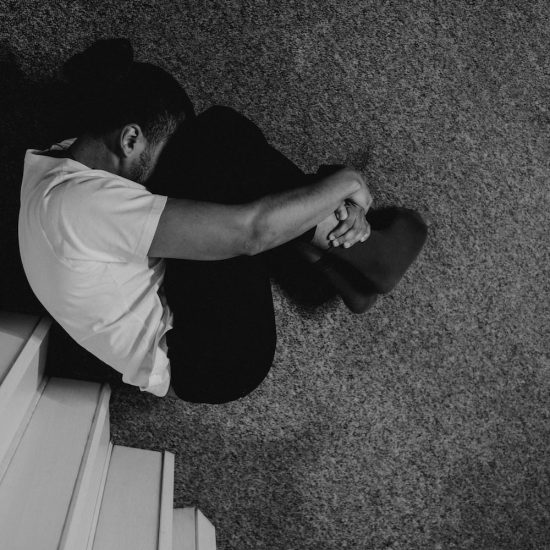In this article
Seems That You Can’t Seem To Win Over Your Bad Habits?
Here’s a stat that’ll make you pause: 92% of people fail to break bad habits.
I used to be part of that statistic. You probably are too.
We’ve all been there—promising ourselves we’ll stop scrolling social media, quit eating junk food, or finally break that procrastination cycle. We rely on willpower, motivation, and sheer determination.
But here’s the brutal truth: You’re fighting the wrong battle when trying to break bad habits.
The Real Problem: You’re Fighting Your Environment
Most people think learning how to break a bad habit is about having more discipline. They believe they need to be stronger, more motivated, or more committed to break bad habits.
That’s like trying to swim upstream in a raging river.
Your environment is silently sabotaging every good intention you have. It’s the invisible force that makes bad habits feel effortless and good habits feel impossible.
The One Strategy That Changes Everything
Make Bad Habits Invisible
The most powerful way to break bad habits isn’t to fight them—it’s to remove them from your environment entirely.
Here’s how I learned this lesson the hard way:
I used to mindlessly eat cookies while working. Every afternoon, like clockwork, I’d grab a handful from the kitchen counter. I tried willpower. I tried portion control. I tried everything to break this bad habit.
Nothing worked.
Then I did something ridiculously simple: I moved the cookies to the garage.
Now when I want cookies, I have to walk outside, unlock the garage, and deliberately grab them. In winter, that’s enough friction to stop me cold.
The walk gives me time to think: “Do I really want these cookies?”
Most times, the answer is no.
Why This Works: The Science Behind Environment Design
Your brain follows the path of least resistance. It’s constantly looking for the easiest option available.
When you make a bad habit harder to do, you’re essentially adding friction to the behavior. When you make a good habit easier, you’re removing friction.
This isn’t about willpower—it’s about strategic laziness when you break bad habits.
The Friction Formula
| Bad Habit | Current Environment | New Environment | Result |
|---|---|---|---|
| Phone scrolling | Phone next to bed | Phone in kitchen | Must walk to check phone |
| Junk food snacking | Chips on counter | Chips in basement | Extra steps create pause |
| TV binge-watching | Remote on coffee table | Remote in drawer | Small barrier breaks autopilot |
How to Break a Bad Habit: The 3-Step Process
Learning how to break a bad habit effectively requires a systematic approach.
Step 1: Identify Your Trigger
Every bad habit has a trigger—the environmental cue that starts the behavior.
Common triggers that prevent you from breaking bad habits:
- Your phone sitting within reach
- Junk food in visible locations
- Your TV remote on the coffee table
- Social media apps on your home screen
- Cigarettes in your car
Step 2: Remove the Trigger
This is where most people get it wrong when trying to break bad habits. They try to resist the trigger instead of eliminating it.
Instead of fighting the trigger, make it invisible to break bad habits:
- Hide your phone in another room
- Put junk food in the basement or garage
- Store the TV remote in a drawer
- Move social media apps to the last page of your phone
- Keep cigarettes in an inconvenient location
Step 3: Add Friction
If you can’t remove the trigger completely, make it harder to act on when you’re working to break bad habits.
Examples of adding friction to break bad habits:
- Log out of social media accounts after each use
- Use a physical alarm clock instead of your phone
- Keep junk food in hard-to-reach places
- Use website blockers during work hours
- Leave your credit cards at home when going out
Real-World Examples That Work
Breaking the Social Media Habit
Before: Instagram app on home screen
After: Moved to folder on last page, logged out after each use
Result: 80% reduction in mindless scrolling
This simple change helped me break bad habits around social media consumption.
Stopping Late-Night Snacking
Before: Chips and cookies in kitchen pantry
After: Moved to garage storage
Result: Had to make conscious decision to go outside
Learning how to break a bad habit often means making it less convenient.
Reducing TV Time
Before: Remote on coffee table, Netflix auto-playing
After: Remote in bedroom drawer, turned off auto-play
Result: More intentional viewing choices
The Psychology of Environmental Design
When you change your environment, you’re not just changing your surroundings—you’re changing your automatic responses.
Most bad habits happen on autopilot. Your brain sees the cue, follows the routine, and gets the reward without conscious thought.
By removing or hiding the cue, you break the autopilot loop and make it easier to break bad habits.
This is the real secret of how to break a bad habit permanently.
Your Action Plan: How to Break Bad Habits Today
Week 1: Audit Your Environment
Look around your space and identify:
- What bad habit triggers are visible?
- What makes your bad habits easy to do?
- What environmental cues start your unwanted behaviors?
Understanding these triggers is crucial when learning how to break a bad habit.
Week 2: Remove One Trigger
Pick your biggest bad habit and remove its primary trigger from your environment.
Don’t try to change everything at once. One trigger, one week.
This focused approach is more effective to break bad habits than trying to change everything simultaneously.
Week 3: Add Friction
For habits you can’t eliminate completely, add steps between you and the behavior.
The goal isn’t to make it impossible—just less convenient when you want to break bad habits.
The Bottom Line
Learning how to break a bad habit isn’t about having more willpower or being more disciplined.
It’s about being smarter than your environment.
Make bad habits invisible. Make good habits obvious.
Your environment shapes your behavior more than you realize. Change your environment, and you’ll change your life.
Right now, pick one bad habit. Identify what triggers it. Remove that trigger from your environment.
Make it invisible.
When you break bad habits through environmental design, you’re not just changing behaviors—you’re changing your entire life trajectory.
Your future self will thank you.


